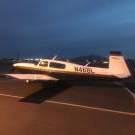Minnesota Crash
-
Members Online
- ckb
- Utah20Gflyer
- katzhome
- vik
- stevesm20b
- LANCECASPER
- PT20J
- Greg Ellis
- hubcap
- CChris
- hammdo
- MatthiasArnold
- skydvrboy
- Marcopolo
- laytonl
- Hank
- jetdriven
- TCC
- Chris Higgins
- jeff s
- Stubby
- AMG880
- Kesk
- Brandt
- EricJ
- WS6mro
- Kawabob
- MarkC
- IvanP
- Hradec
- slowflyin
- 201Mooniac
- richardbrochu27
- FlyWalt
- phrogpilot73
- wombat
- eman1200
- SoKYMooney
- JCCV
- johnbkeck


Recommended Posts
Join the conversation
You can post now and register later. If you have an account, sign in now to post with your account.